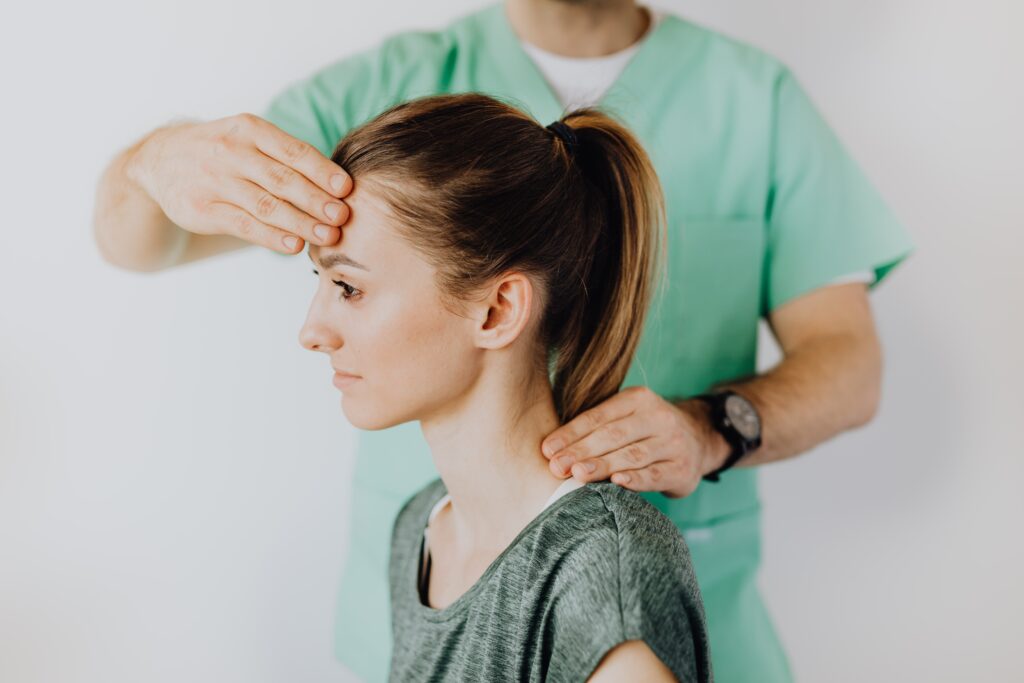Physical Therapy Helps Disk Herniations In The Neck
Introduction
Physical therapy is a popular and effective form of treatment for many conditions, including neck disc herniation. It is a non-invasive option that can help treat the underlying cause of the herniation while simultaneously reducing pain. Physical therapy focuses on rehabilitation through a combination of exercise, manual therapy, and patient education. In this article, we will explore how physical therapy can help treat neck disc herniation, what to expect during physical therapy sessions, what types of exercises you might do, and how long recovery takes.
What to Expect at Physical Therapy
When you first visit your physical therapist, they will take a detailed medical history and perform an initial evaluation which may involve taking measurements such as range of motion or strength tests. The evaluation helps the therapist identify any areas of weakness or tension in your body and create an individualized plan for you. With neck disc herniation, your physical therapist will aim to reduce pain, decrease muscle tension, improve posture, and increase strength and flexibility in the surrounding muscles.
They may also use imaging such as X-rays or MRIs to better understand your condition and to monitor progress throughout treatment. Once the evaluation is complete, your physical therapist will create a treatment plan tailored to your specific needs in order to reduce pain and improve functioning. This plan will likely include both passive treatments such as manual therapy and active treatments like exercise programs.
What Types of Exercises You Might Do
When it comes to treating neck disc herniation, exercises prescribed by your physical therapist will vary based on the severity of your condition and contributing factors. These can include stretching, posture correction, aquatic-based programs, and more. Your therapist will closely monitor your progress and adjust exercises accordingly to help you build strength and reduce risks of injury. Some potential exercises recommended may include:
- Shoulder blade squeeze
- Chin tuck
- Seated row with tubing
- Retractions with nod
- Forward flexion with tubing
- Scapular stabilization exercises
Together with your physical therapist, you can craft a plan of care to facilitate recovery.
How Long Recovery Takes
The duration of recovery from neck disc herniation depends on several factors such as age, severity of injury/condition, lifestyle habits prior to injury/condition (e.g., smoking), amount and type(s) of treatment received (such as medication vs physical therapy). Typically, recovery time ranges anywhere from six weeks to three months or more depending on your individual factors. However, research suggests that engaging in regular physical activity after the acute stage has been reached reduces recovery time significantly compared with non-treatment groups [1]. It is important to remember that recovery is unique to each individual and must be tailored to your specific needs.
Conclusion
Physical therapy is an effective way to treat neck disc herniation without resorting to invasive surgeries or medications with serious side effects. Your physical therapist can provide passive treatments like massage or joint mobilization in addition to active treatments like exercise plans specifically tailored for you in order to reduce pain and improve functioning over time. Recovery time varies depending upon factors such as the severity of injury/condition, but engaging in regular activity after the acute stage has been reached has been proven to greatly reduce recovery time compared with those that did not receive any treatment. To experience a full recovery, it’s necessary to follow the program recommended by the physical therapist consistently.
FAQ
Can a herniated disc get better with physical therapy?
Yes, physical therapy can help in many cases. It can strengthen the muscles and improve flexibility which takes the pressure off the affected nerve.
What is the best treatment for herniated discs in the neck?
The treatment should be determined by healthcare provider, depending on the severity of the damage, steroidal and non-steroidal anti-inflammatory medications might be prescribed.
Will my herniated disc in my neck ever heal?
Most often, given enough time and proper treatment the chances are good that the herniated disc will heal. In some cases, surgical therapy might be needed.
What actually happens when traction therapy is done on someone with a herniated disc?
Traction therapy can help to reduce the pressure that is being placed on the affected nerve. This helps to reduce the pain and inflammation while also promoting additional blood flow to the area.
How long does it take to rehab a herniated disc?
Rehab time can vary greatly depending on the severity of the condition, but generally it takes around 6-8 weeks for mild to moderate cases.
Is deep tissue massage good for herniated disc?
Yes, deep tissue massage can help alleviate the symptoms of a herniated disc. It can improve blood flow to the area which can help to reduce inflammation and improve healing.
How long does it take for neck traction to work?
The duration of neck traction is usually 15 to 20 minutes per session with a frequency of 1 to 3 times per day. It can take several days to several weeks depending on the individual.
Can traction make a herniated cervical disc worse?
In some cases, traction therapy can make a herniated cervical disc worse if it’s not done correctly or if it’s not safe for certain individuals. It’s important to follow the healthcare provider’s advice.
Is traction good for your neck?
Traction can be very beneficial in treating certain neck conditions such conditions include; cervical radiculopathy, herniated discs, and Cervical spondylosis.
Can traction reverse a bulging disc?
Traction is unlikely to reverse a bulging disc completely, but it can alleviate the pain and pressure by taking the pressure off the affected nerve.
References:
[1] O’Connor F., et al., “Exercise reduces recurrence times for low back pain: A Randomized Controlled Trial,” The Spine Journal 9 (2009): 1041–1049

